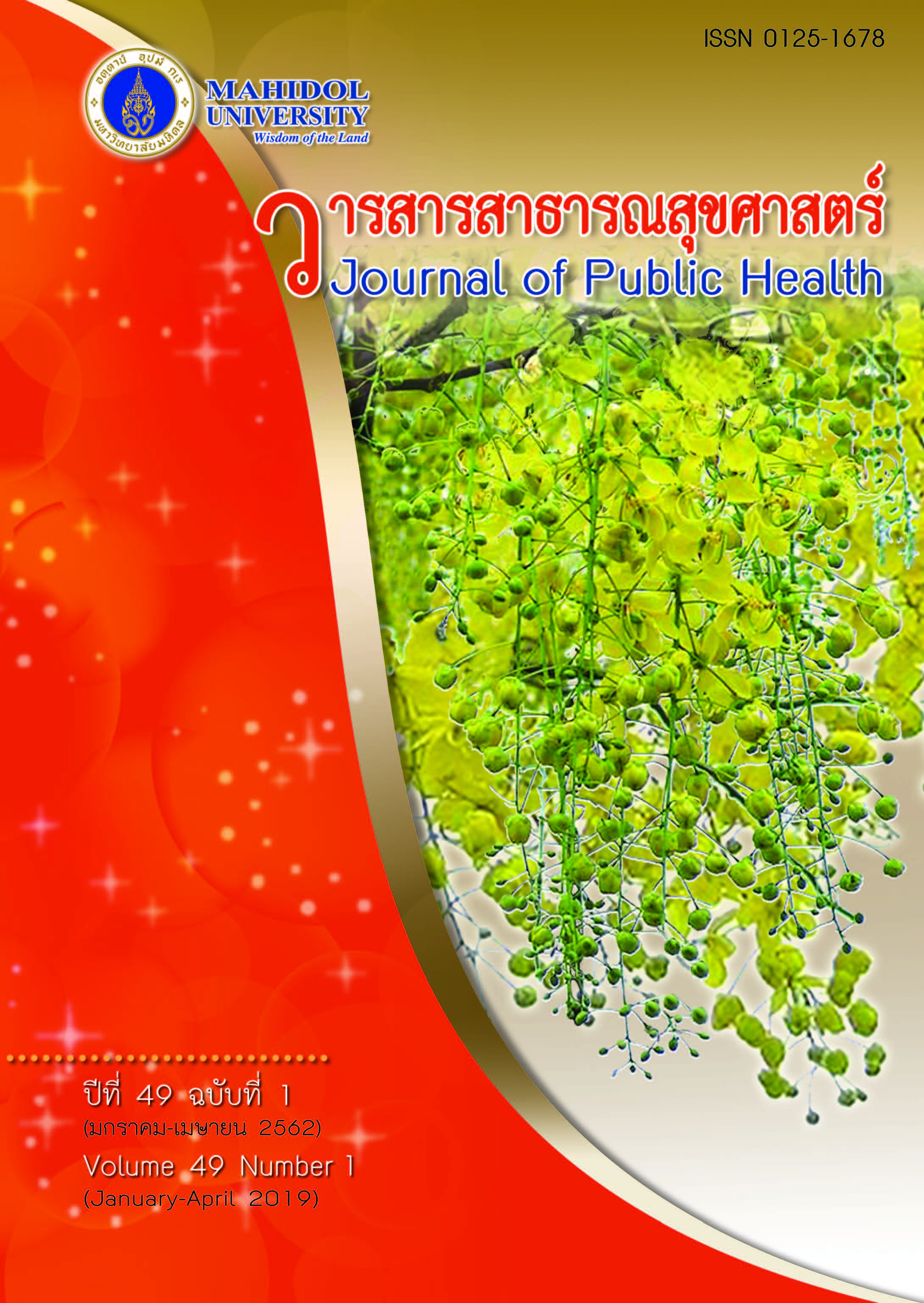Correlation between Transcutaneous Bilirubinometry and Measurement by Digital Photographic Yellow Level among Neonates
Keywords:
neonatal jaundice, serum microbilirubin (SMB), transcutaneous bilirubinometry (TCB), digital photographic yellow level (DPYL)Abstract
Neonatal jaundice is a common medical problem among newborns. This study was conducted to evaluate the correlation among serum microbilirubin (SMB), transcutaneous bilirubinometry (TCB) and digital photographic yellow level (DPYL) among neonates. This research employed a quasi-experimental design. TCB and DPYL at chest level of 42 newborns were determined at more than 24 hours after birth in Ramathibodi Hospital. Digital photographs were taken at chest level of the newborns and were analyzed using PhotoshopÒ computer program to determine the yellowish level of neonatal skin. The results of three methods were compared. Regression equation for the correlation between SMB and DPYL was SMB = 6.073 + 0.191(DPYL) mg/dL with R2 = 0.766, (p < 0.05). The regression equation for the correlation between TCB and DPYL was TCB = 5.414+0.22 (DPYL) mg/dL with R2= 0.935, (p < 0.05). The results of DPYL could be used as a screening test for neonatal jaundice especially in locations where resources are limited.
Downloads
Published
Issue
Section
License
Creative Commons License CC-BY-ND


